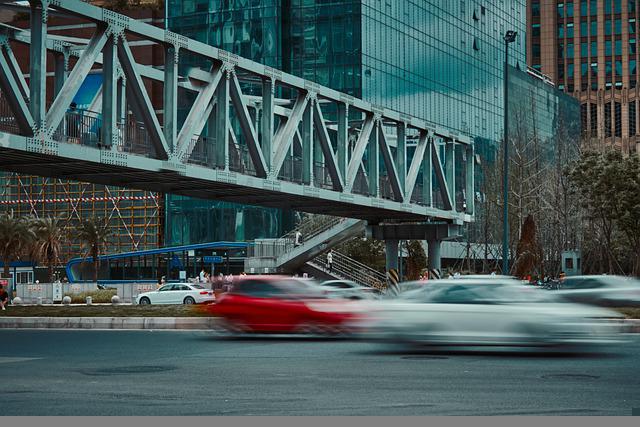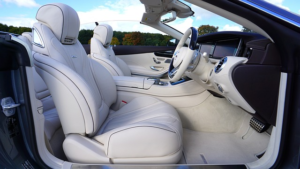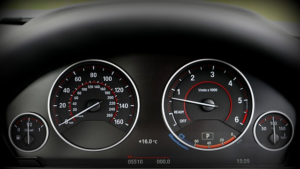Life in the fast lane: Better auto photography (part two) – Australian Photography
By Matty Graham | 2 August 2022
This is a two part series on automotive photography. You can see part one, from last week, here.
Don’t forget the details
While overall and three-quarter compositions are great, too many photographers fall into the trap of neglecting the details of the car. Teams of designers have spent hundreds of hours sculpting out these cur…….

By Matty Graham | 2 August 2022
This is a two part series on automotive photography. You can see part one, from last week, here.
Don’t forget the details
While overall and three-quarter compositions are great, too many photographers fall into the trap of neglecting the details of the car. Teams of designers have spent hundreds of hours sculpting out these curves, badges and grills and some of these little details are the very thing that make or model may be famous for.
Canon EOS 5D Mark IV, 50mm f/1.4 lens. 1/125s @ f4, ISO 400.
The trick with detail shots is to use a shallow depth of field to isolate the subject and blur out the background to help the detail stand out even further. Getting close up is a great approach but this may not always be possible or desirable – macro lenses can come in very handy here thanks to their 1:1 magnification ratio that will show subjects in true life size.
Canon EOS 5D Mark IV, Tokina opera 50mm F1.4 FF lens. 30s @ f7.1, ISO 250.
Switch up your focal lengths
While developing a signature style that’s associated with your automotive photography can be a good thing, shooting with the same lens can lead to your imagery looking a little stale. The best way to add variation to your automotive portfolio is to switch up your focal length and varying wide and long angles can add new energy to frames.
Canon EOS 7D, 10-20mm lens @ 12mm. 1/200s @ f8, ISO 100.
Ultra-wide lenses will allow you to show more of the scene while making the most of foreground interest in the frame, with the wide angle stretching the perspective of areas close to the lens. Meanwhile, a long lens will deliver a compressed perspective, which is great for tighter framing.
If you have a bag full of glass, you can employ specialist lenses, such as a fish-eye optic or tilt-shift lenses to correct converging verticals if you are including tall buildings in the background of your shot.
Polish those pixels
In these days of digital photography, clicking the shutter is of course only half the job and processing your image is just as important as taking it. The first step in this journey is to shoot in RAW rather than JPEG. While JPEGs take up less space on the memory card, RAW files retain more tonal data, enabling photographers to push those pixels even further, rescuing Highlights in the frame and also revealing Shadows when necessary.
The editing process gives photographers a second chance to add their own signature style to a frame. I wanted to enhance the colours of this classic car and make more of the texture in the brickwork that provided extra interest to the frame. OM System O-M1, 45mm f/1.2 lens. 1/2500s @ f2.8, ISO 200.
To do this, RAW conversion software such as Lightroom is necessary, and you can speed up this processing work by developing your own presets to get the stylised look you desire, such as a super-saturated effect or something more matte and flat.
However, the journey doesn’t stop here, because once you’re done with Lightroom, you can open the file in Photoshop to refine the image further and this is where elements in the frame can be cloned out with precision along with removing any dirt or scratches from quarter-panels or windshields.
Don’t forget the details! Car design is a beautiful thing and getting in close to isolate and highlight a feature will help tell the story of the car in a more compelling way. This image was shot at a classic car event and the red detail pops against the black paint. Canon R6, 50mm f/1.4 lens. 1/640s @ f1.8, ISO 100.
Get better access
One of the biggest challenges when it comes to car photography is finding the right subjects. Photographers just starting out may well struggle to get access to supercars but there are things you can do to widen your exposure to cool vehicles. The first is to contact local car clubs and show up at a regional meet.
Captured in the pit garage during a break between racing, I needed to ask for some ladders to get this aerial shot – making friends with the pit crew always pays off. Think about how the image can be used on pages in a magazine – leave room for text around the frame. Canon 5D Mark IV, 17-40mm f/4 lens @ 17mm. 1/125s @ f6.3, ISO 320.
Talk to people, find out the story behind their car, ask why they bought or built it and then offer to take some photos. Another route is to approach local car dealers; offer to supply some images for marketing material in return for getting access to their more exciting models of cars.
As your portfolio grows, it will become easier to get access to race circuits as you’ll be able to show off a website/portfolio or even attend on behalf of local media.
Look for complimentary colours in the frame – this orange Porsche pops against the blue sky and green grass. Also be ready for the critical moments; overtakes, crashes and chequered flags. Canon 7D, EF70-200mm f/4L USM lens @ 118mm. 1/320s @ f14, ISO 250.
Two wheels are great too
The reality is that many of the skills, techniques and kit tips we’ve mentioned already are easily transferable to shooting motorbikes as well as cars. For those photographers looking to make money from their automotive imagery, shooting bikes and cars opens extra doors and means there’s more events to cover and more magazines to sell these images to.
Canon 6D, EF100mm f/2.8 Macro USM lens. 1/250s @ f8, ISO 100.
If anything, bikes are more affordable and therefore likely to be more subjects to shoot. Even more important than that though, is that motorcycles are beautiful machines, dripping with design elements that are ripe to be photographed. ❂






